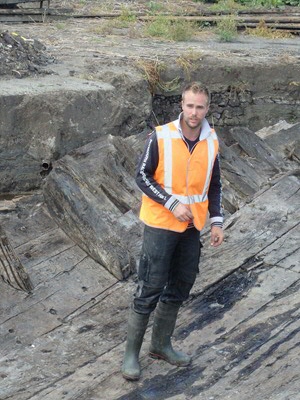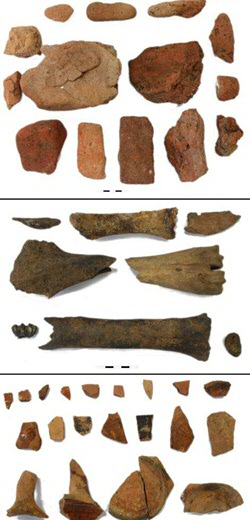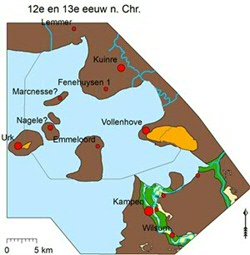Archaeological remains reveal history of the Noordoostpolder

The Noordoostpolder, an area of low-lying land surrounded by dikes, contains more traces of its own medieval past than previously thought. According to maritime archaeologist Yftinus van Popta, many settlement remains that disappeared into the Zuiderzee bay and were later found in the fields of the reclaimed Noordoostpolder have been wrongly interpreted as ships’ waste. For the first time, Van Popta’s PhD research charts the changes in the Noordoostpolder region during the late Middle Ages. While the villages of Urk and Schokland fought and won the battle against the water, other settlements disappeared beneath the waves. Van Popta will be awarded his PhD from the University of Groningen on 29 October.
For his PhD research, Van Popta reconstructed the landscape and habitation in the north-eastern part of the Zuiderzee region (now the Noordoostpolder) from around 1100 to 1400 CE. Little was known about this area until recently, other than that it would eventually become the Zuiderzee. Previously, the focus had largely been on shipwrecks.

Not ships’ waste, but the remains of settlements
Popta’s research shows that between 1100 and 1400 CE, this area was transformed from an unreclaimed and uninhabited peatland with lakes – and later settlements – into an area dominated by open sea. The first inhabitants were farmers. In the thirteenth and fourteenth centuries, the population became more diverse, with fishers, farmers, landowners and merchants. Although there are few traces left of the reclamations, cultivation and habitation from that time, more has been preserved than was previously thought, says Van Popta. ‘In the past, the archaeological remains of habitation unearthed in the fields of the Noordoostpolder have been mistaken for ships’ waste and have unfortunately been largely destroyed as a result of agricultural activity and redevelopment plans. Based on my research, a decision has now been made to protect them by including them in archaeological policy.’
Urk and Schokland much bigger
The combined forces of storms and floods caused most of the land to disappear over the course of several hundred years, explains Van Popta. ‘As a result, villages such as Nagele, Marcnesse and Veenhuizen were drowned, while islands such as Urk and Schokland just managed to survive. These islands were once many times larger than what was ultimately left of them.’ Vestiges of the vanished parts of the islands – including dikes, terps and ditches – can still be found on the former seabed.

Linking past and present
Van Popta has been able to reconstruct the landscape and habitation of the region from the late Middle Ages, thereby casting light once again on the lost islands, drowned villages and land washed away by the sea. It is now possible to link the current names of the Noordoostpolder villages of Nagele and Marknesse to their late medieval predecessors. Whereas such a reconstruction was once deemed almost impossible (because the Zuiderzee had swept away all of the evidence), it seems that it can be done after all. An important part of the process is recognizing that disturbed archaeological remains in the soil of the polder, such as pottery, animal bone and bricks, do not represent ‘ships’ waste’ or ‘noise’, but are instead the very last remains of drowned villages.
The research was funded by the Dutch Research Council (NWO).
More news
-
13 January 2026
Doing good in complex situations
-
07 January 2026
How music is helping to revive the Gronings dialect
